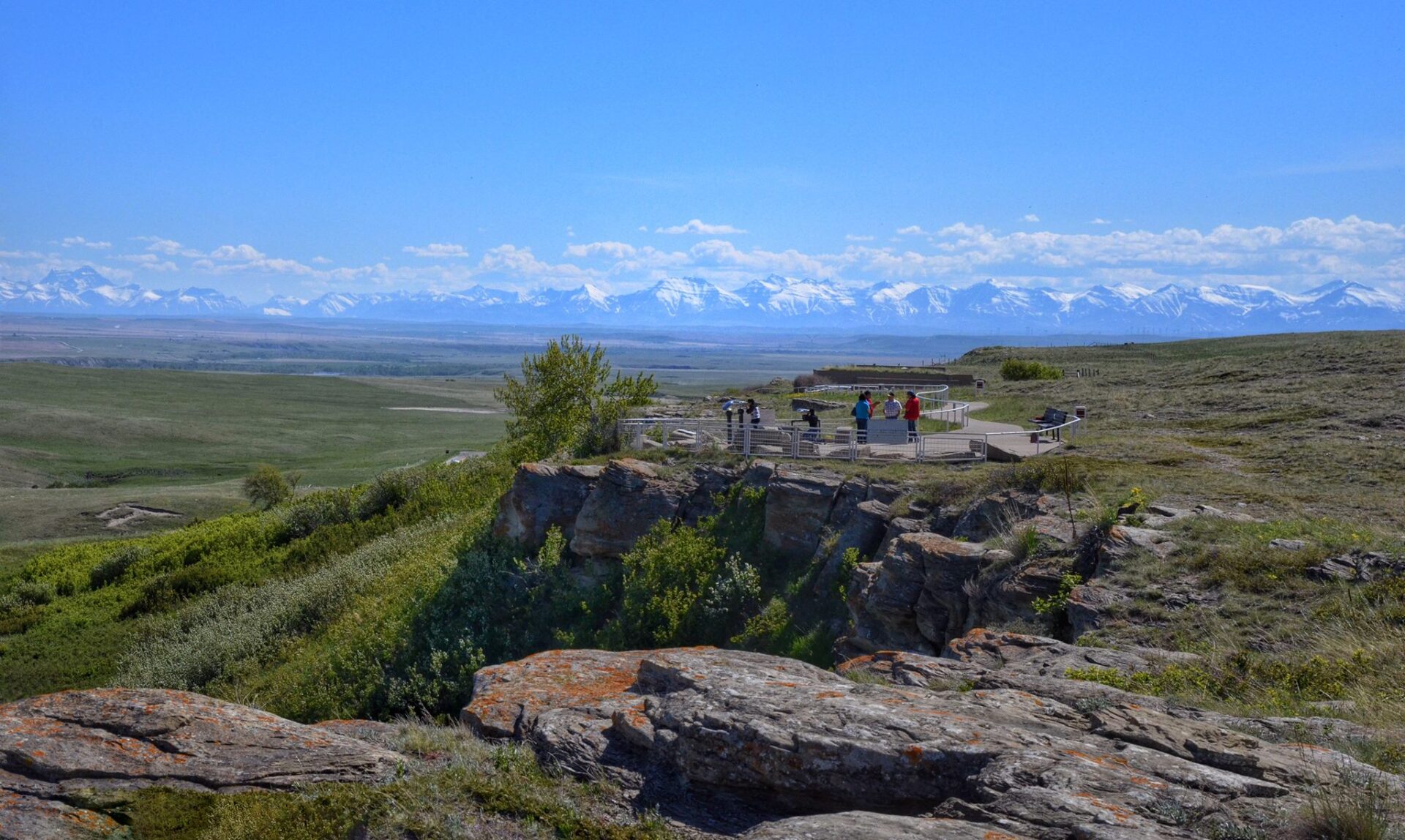
Indigenous history in Alberta
Places
Frog Lake National Historic Site
Frog Lake, Alberta
The 1.6 hectare Frog Lake Historic Site – amid rolling aspen spruce parkland, 3.5 kilometres south of the Village of Frog Lake and 13 kilometres northeast of the North Saskatchewan River – was designated as a Provincial Historic Resource on June 15, 1976.
The events at Frog Lake occurred during a time of heightened tension between Prairie First Nations and the Government of Canada. The Plains Cree were faced with severe food shortages due to the sharp decline in bison herds and the government’s decision to withhold rations that had been promised in Treaty 6.
Frog Lake is also a National Historic Site, as it tells: “A story of hardship, confusion, hunger and a retaliation that would cost the community everything.
Head Smashed In Buffalo Jump
Fort MacLeod, Alberta
Head-Smashed-In Buffalo Jump World Heritage Site is known for its remarkable testimony of prehistoric life. The site bears witness to a custom practiced by native people of the North American plains at HSIBJ for nearly 6,000 years. Thanks to their excellent understanding of topography and of bison behavior, they were able to kill bison by driving them over a precipice. Carcasses were butchered then, processed in the camp below the cliff. In 1981, the United Nations Educational, Scientific and Cultural Organization (UNESCO) designated the jump as a World Heritage Site, placing it among other world attractions such as the Egyptian pyramids and the Galapagos Islands.
Road Map
Frog Lake, Alberta to Fort MacLeod, Alberta
Popular VisitLists
Every Town Has a Story in Atlantic Canada
Fredericton, New Brunswick to Sherbrooke, Nova Scotia 63 places
Each of these places tell the story of the community they are in.
View VisitList
Fish and Fishers in Atlantic Canada
Canso, Nova Scotia to Shelburne, Nova Scotia 17 places
Places that tell the story of the fishery in Atlantic Canada
View VisitList
Making, Building, Mining and Processing in Atlantic Canada
Trinity, Newfoundland and Labrador to Shelburne, Nova Scotia 21 places
Visit the source of everything from food and tools to fabric to minerals.
View VisitList
Makers, Performers and Artists of Atlantic Canada
Miscouche, Prince Edward Island to Shelburne, Nova Scotia 35 places
Learn about and engage with our region’s rich heritage of craft, fine and performing arts
View VisitList
